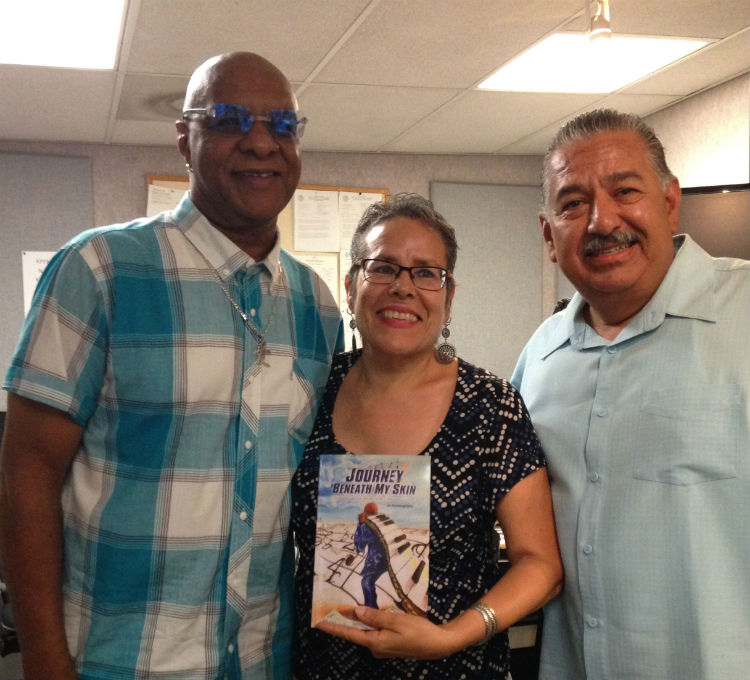For many of us active in the Los Angeles salsa community, we first remember Fitto Foster as a founding member of one of the top salsa bands back in the 1970’s – Orquesta Versalles. What we didn’t know was that this singer, keyboardist, composer and arranger would transform into an entertainment phenomenon known as La Palabra and play, with little recognition, a pivotal role in the evolution of the salsa romántica revolution.
But while we witnessed first hand his many successes and triumphs on his journey as La Palabra, we knew little about all the dramatic events in his life that shaped his character and history. Well, we do now. Or should I say we do after reading all about his life in his new autobiography, Journey Beneath My Skin: A Black Latino in Pursuit of the American Dream (2D House Publishing, 2014).
La Palabra (yes, that is now his legal name) takes us back to his beginnings of growing up in Cuba, reflecting on living with his father in Guantánamo and then with his mother in Caimanera. While he has many fond memories of his early years, they were also colored by the uncertainties brought about by the Cuban Revolution, his father’s move to the United States and his mother’s starting a new life with a new husband.
We learn that he first discovered the piano when he was 11 years old and immediately took to it. He writes: “To me, the piano became an obsession. It was as if I had been looking for a lost love and had finally found her.” He went on to win a talent competition, and so began a musical journey that would take him to the United States.
As we continue his tale, we follow him to Detroit, California, Miami, Georgia and back to California, with a side trip to China . . . all along the way experiencing high highs and low lows. And what is particularly striking about his autobiography is how open he is talking about the lows. Sure, it’s easy to brag about the great things that happen in one’s life, but what courage it takes to reveal your missteps and disappointments.
For La Palabra there are broken marriages, troubles with the law, business deals gone wrong, and personal and professional betrayals. He talks about all of these with candor.
For salsa lovers, the one chapter in La Palabra’s life that is marked by good and bad is the role he played in the creation of the style of salsa that would become known as “salsa romántica”—a role for which he would get no credit.
Exhibit A: His arrangement and recording of the ballad by Emanuel, Todo se derrumbó, as a salsa tune. In 1981, he recorded the song with his group Orquesta Candilejas, also known as Orquesta Versalles. Then in 1983, it was recorded by Louie Ramírez and Ray de la Paz with a different arrangement but based on his concept on the album Noche Caliente. It was such a hit that it kick-started the whole salsa romántica movement that would dominate the sound of salsa for decades. But La Palabra was not given credit for his contributions.
It wasn’t until 10 years later that he met Ramírez who revealed that he had heard that it was a guy from Los Angeles who had first recorded Todo se derrumbó as a salsa number; and, yes, it was La Palabra. Finally, La Palabra, got the validation he needed, realizing “that my work had given way for other salsa artists to follow in my footsteps.”
Exhibit B would be his arrangement and recording of Lady, a hit by Kenny Rogers. But I’ll let you read all about that yourself.
As the book title suggests, La Palabra also delves into the sensitive area about the discrimination he experienced as a black Cuban. He even recalls a moment when he first met Celia Cruz in Miami and tried to engage her in a conversation about the issue, sensing that they might have shared experiences. But not even the guarachera del mundo would enter into that discussion.
You are going to want to learn how that chat went down and about the stories and situations he recounts and much more, and you can only do that by reading Journey Beneath My Skin: A Black Latino in Pursuit of the American Dream, by La Palabra.

La Palabra visits hosts Kathy “La Rumbera” Díaz and Armando Nila of KPFK’s “Canto Tropical” show to talk about his autobiography.


Leave A Reply